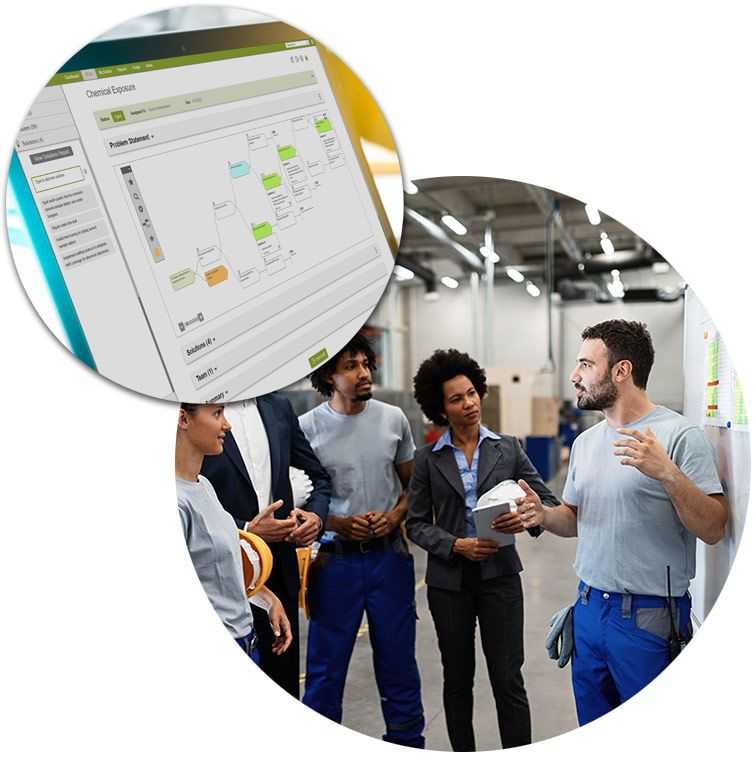Pricing
Whether you're an individual problem-solver or part of an investigation team, our RCA Software helps you evaluate and solve problems. Learn more about what's included in Causelink's tools for root cause analysis.
Individual
1 user
Cloud-based and mobile-friendly, Causelink Individual is a state-of-the-art RCA investigation tool. Causelink Individual offers the advanced charting performance, intuitive interface, and sharp report output of Causelink Enterprise to the single user.
Team
Cloud-based option for up to twenty named users. If you have a smaller team of problem-solvers who need to collaborate on RCA projects, Causelink Team is the solution. Allows teams to work together to analyze problems and track actions.
Enterprise
20+ users
- 5Whys+ Template
- Fishbone/Ishikawa Diagram
- Cause & Effect Chart
- Incident Timeline
- Export to PDF, DOCX, and CSV
- Standard Reporting
- Team collaboration
- Groups & permissions
- User management
- Administrator access
- Advanced reporting
- RCA & activity audit logs
- API access
- Integrations (Power BI, Tableau, CMMS, EHS...)
- SSO authentication (SAML2)
- Premium support
- On-premise available
Cloud-based or On-Premise, Causelink Enterprise is a powerful RCA software tool for large teams and/or multiple locations. Supporting productivity, collaboration and culture, Causelink Enterprise helps solve the toughest problems and gives leaders the power to continuously improve their organization.
FAQ
For every 10 Causelink licenses purchased, customers receive
- Administrator Training: Two 1-hour meetings attended by 1-4 of your RCA Program leaders. Your team learns how to configure Causelink communication options, tags, permissions, workflow, localization, and other settings important to your program.
- Manager/Analyst Training: Two 1-hour sessions that help your end users get started with Causelink. Attended by up to 100 people per-session, these sessions show you how to create records, define the problem, make a timeline, analyze cause & effect, assign corrective/preventative actions, and create the final report. Causelink training is held online via MS Teams, Zoom, or with a customer-provided conference system.
When you create a record in Causelink and use the Sologic RCA template, the first screen prompts you to document evidence. During Cause & Effect Analysis in any template, you can associate evidence to causes. As you associate solutions with causes, which are reinforced by evidence, your solutions are also evidence-based.
Yes, Causelink supports mobile phones and tablets via your mobile browser. Simply go to the same URL that you use with your desktop browser, enter your same credentials, and Causelink loads with a simplified, mobile-friendly interface.
Yes, integrations are often done through the Causelink API. Access to the API is included with a Causelink Enterprise license. We will provide the SDK and documentation on the API methods upon request.
If you are a Causelink Enterprise customer, we’ll provide you with documentation on how to access and utilize our API methods. All data displayed in Causelink runs through the API, so anything can be integrated. Key data points include: Record Name, Actions (Solutions, Tasks, Workflow Steps), Groups, Locations, Impacts, Costs, Equipment, and Materials.
Access to Causelink Team and Enterprise records can be managed at the group, role, and/or individual record level. Data access permissions related to groups and roles are defined by your Administrators. Each user is assigned one role and can be associated with one or more groups.
- Each role can be set with the ability to view, edit, or delete all records in the system or only records within group(s) that users belong to.
- Administrators set view permission default options for new RCA Records.
- As you add RCA team members, you can configure whether they have edit or read-only access.
- Your Administrator can configure workflows to disable editing when a record is closed.
Yes, for Causelink Enterprise customers, the system integrates with Active Directory, ADFS, SAML2, and OpenID Connect (Azure), which can be configured in Admin > Authentication.
There are several ways to manage users in Causelink Team and Enterprise;
- Manually by submitting their email, role, and group(s) into a form, which emails the user with a link to register their account.
- Upload a .csv file with email addresses and roles for all new users, who will receive emails with a link to register their account.
- Causelink Enterprise customers can integrate with Active Directory, ADFS, SAML2, or OpenID Connect (Azure).
As part of Causelink software maintenance, our technical staff is available to assist with technical issues and customer questions before, during, and post implementation. Examples of this type of support include troubleshooting connection issues on the network, email configuration, Active Directory authentication troubleshooting, or general questions from end users about how the system works. Also included in standard support are periodic code updates. We update Causelink 2-3 times per year, which provides you with the latest features and improvements.
Causelink Enterprise licensing is based upon concurrent users; the number of users logged into the system at one time. Most customers choose between 5 and 50 licenses. A 5-seat license will generally support 50 named users, but that number can vary depending upon your RCA program and criteria for when to investigate an incident.
Causelink Team and Causelink Individual licensing is based upon named users.
Yes, for Causelink Team and Enterprise customers we request that you give us at least 7 days notice before running any automated scans. This allows us to configure a test system for you, which is separate from our production systems. Note, Sologic hires an independent 3rd party to run annual vulnerability scans on our software and AWS hosting architecture.
Yes, for Causelink Enterprise customers, this can be accomplished via ADFS, OpenID Connect (Azure), or SAML2.
Check to make sure the email wasn't caught in a spam filter. If that is not the problem, you may need to add the user under a different account type. There are two types of accounts in Causelink: User and Person accounts. User accounts are assigned a Role and can access Causelink. Person accounts can’t access Causelink but can be referenced within RCA records. Person accounts do not receive a user registration email. You can change existing Person accounts to Users by editing the record and clicking "Convert to User".
Causelink Team and Enterprise ships with 5 pre-defined Roles (See the User Guide). Each user is assigned one role and can be associated with one or more Causelink Groups (Groups are configured by you in Administration). Permission to view data is defined at several levels;
- Each Role can be set with the ability to view, edit, or delete all records in the system or only records within Group(s) that they belong to.
- Administrators set View Permission default options for RCA Records.
- As you add RCA Team members, you can configure whether they have edit or read-only access.
Yes, aligned with ISO 27001, user access and specific activities are logged.
Yes, all files go through a virus scan before being uploaded. Also, all Causelink instances are secured under TLS via 2048-bit certificates.
Yes, Causelink is secured under TLS via 2048-bit certificates. We advise On-Premise customers to do the same.
AES-256
In Causelink Enterprise there is an exclusive role called IT which is generally assigned for this purpose. The IT role has access to system settings, such as email smtp server, authentication type, session timeout period, and other technical settings.
Yes, Sologic is certified in ISO 27001; Information Security Management System. Our hosting provider, Amazon Web Service is SOC2 Certified.

